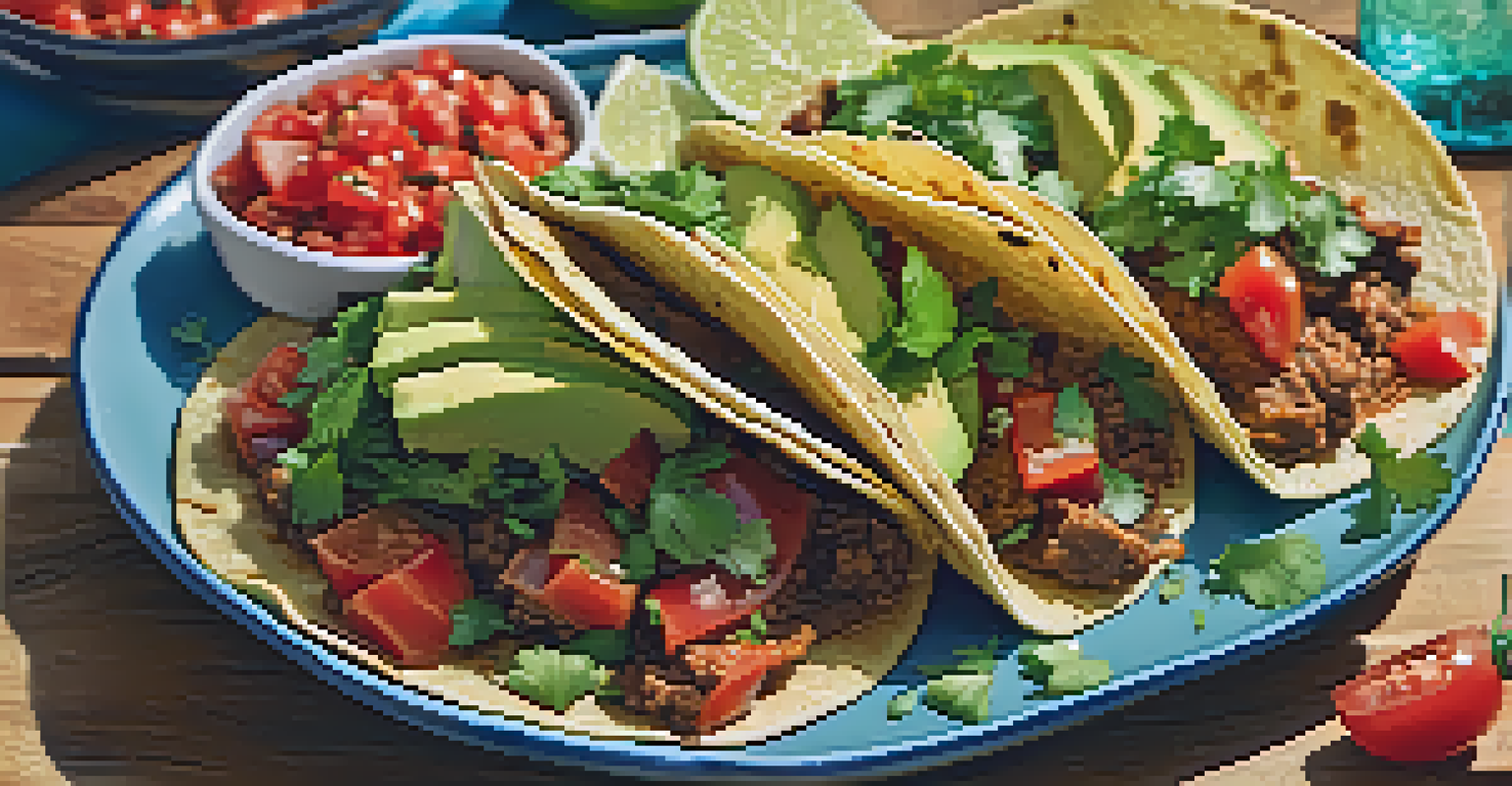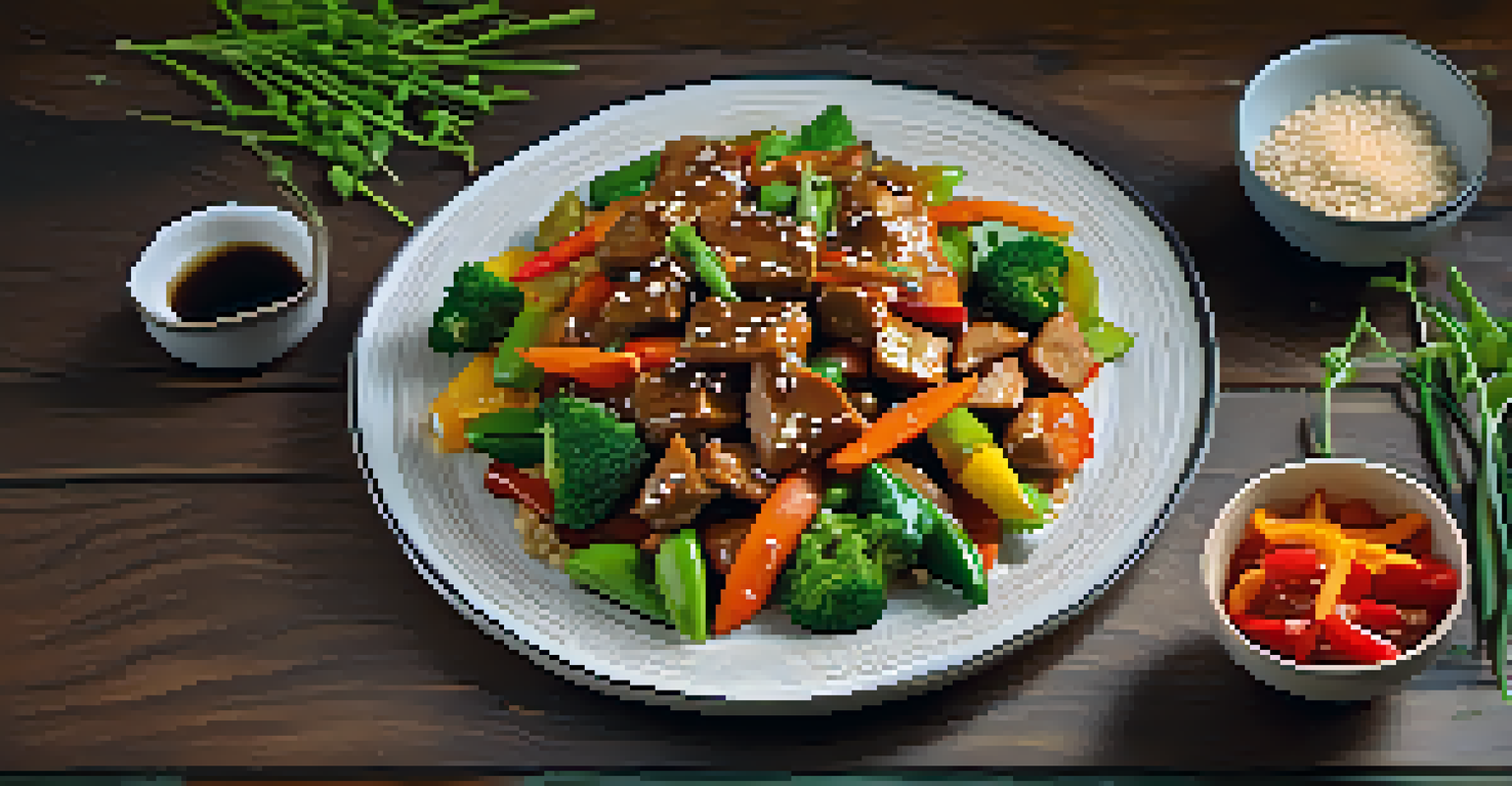Exploring the World of Seitan: A Vegan Protein Powerhouse

What is Seitan and How is it Made?
Seitan, often called wheat meat, is a popular plant-based protein made from gluten, the protein in wheat. To make seitan, flour is mixed with water and kneaded to develop gluten, then rinsed to remove the starch, leaving a chewy, protein-rich substance. This process might sound complex, but it's quite simple and has been used for centuries in various cuisines, especially in Asian cooking.
Seitan is a great source of protein and can be a versatile addition to a vegan diet.
The texture of seitan is remarkably similar to meat, making it an excellent choice for vegans and vegetarians looking to replicate their favorite dishes. It serves as a blank canvas, absorbing flavors from spices and sauces beautifully, which is why many people enjoy experimenting with it in their kitchens. Whether you’re a seasoned cook or a novice, seitan can be a fun ingredient to work with.
Moreover, seitan is incredibly versatile. You can grill it, sauté it, or even use it in soups and stews. This versatility, combined with its meat-like texture, makes seitan a star in many vegan recipes, from stir-fries to barbecues.
Nutritional Profile: Why Choose Seitan?
One of the biggest draws of seitan is its impressive nutritional profile. A 3-ounce serving typically contains about 21 grams of protein, which is comparable to chicken or beef. This high protein content makes it a fantastic option for those looking to increase their protein intake without consuming animal products.

In addition to being high in protein, seitan is low in carbohydrates and fat, which can be beneficial for those following certain dietary plans. However, it’s important to note that seitan is not a complete protein, meaning it doesn’t contain all nine essential amino acids. Pairing it with other protein sources, like beans or rice, can help round out your diet.
Seitan: A Versatile Protein Source
Seitan's meat-like texture and ability to absorb flavors make it a popular choice for those seeking plant-based protein alternatives.
Seitan also contains minerals like iron and selenium, which are important for overall health. While it may not offer the same level of nutrients as whole foods, its benefits as a protein-rich meat alternative are undeniable, especially for those adopting a vegan lifestyle.
Cooking with Seitan: Tips and Tricks
Cooking with seitan can be an exciting culinary adventure, and there are some handy tips to make the most of this ingredient. First, always slice or cube seitan before cooking to maximize its flavor absorption. Marinating it for at least 30 minutes can elevate its taste, allowing it to soak up spices and sauces beautifully.
Seitan has a texture that can mimic meat, making it a popular choice for those transitioning to a plant-based lifestyle.
Another tip is to experiment with different cooking methods. Grilling gives seitan a fantastic char, while sautéing allows for quick preparation and a great texture. If you’re feeling adventurous, try making homemade seitan; it’s easier than you think and can be customized to your liking.
Lastly, don't hesitate to incorporate seitan into your favorite recipes. It works wonderfully in tacos, stir-fries, and even as a pizza topping. The key is to treat it like meat, seasoning it well and cooking it until it’s heated through, ensuring a satisfying meal.
Seitan vs. Other Plant Proteins: A Comparison
When it comes to plant-based proteins, seitan often stands out among its peers. Unlike lentils, chickpeas, or tofu, seitan has a meat-like texture that many find appealing. This quality makes it a popular choice for those transitioning to a vegan diet, as it can mimic the mouthfeel of meat quite effectively.
However, each plant protein has its unique benefits. For instance, legumes are rich in fiber and other essential nutrients, while tofu is a complete protein containing all amino acids. It’s important to incorporate a variety of protein sources in your diet to meet your nutritional needs and enjoy diverse flavors.
Nutritional Benefits of Seitan
With approximately 21 grams of protein per 3-ounce serving, seitan is a great option for vegans looking to boost their protein intake.
Choosing between seitan and other plant proteins ultimately depends on personal preference and dietary requirements. For those seeking a high-protein, low-carb option, seitan is an excellent choice. Conversely, if fiber and a wider range of nutrients are priorities, beans and lentils should take the spotlight.
Popular Seitan Recipes to Try
If you're ready to dive into the world of seitan, there are countless recipes to inspire your cooking. For a quick weeknight dish, try seitan stir-fry with your favorite vegetables and a savory sauce. This dish is not only easy to prepare but also packed with flavor and nutrition.
Another fantastic option is BBQ seitan sandwiches. Simply marinate the seitan in a tangy barbecue sauce, grill it, and serve it on a bun with coleslaw. This recipe is sure to impress even the most dedicated meat lovers and is perfect for summer cookouts.
Don’t forget about seitan tacos! Sauté it with spices and serve it in corn tortillas with your favorite toppings. This dish is not only delicious but also showcases how adaptable seitan can be in various cuisines.
Potential Downsides of Seitan
While seitan is a fantastic protein source, there are some potential downsides to consider. One of the main concerns is that it is made primarily from gluten, which can be problematic for individuals with celiac disease or gluten sensitivity. For these people, consuming seitan can lead to discomfort and health issues.
Additionally, seitan lacks certain nutrients that other plant proteins offer, such as fiber and some essential vitamins. This means it shouldn't be the sole protein source in a balanced diet. To achieve optimal nutrition, it’s crucial to combine seitan with other foods that provide a fuller range of nutrients.
Considerations for Seitan Consumption
While seitan is a fantastic protein source, it should be consumed alongside other foods to ensure a balanced intake of nutrients.
Lastly, some commercially available seitan products may contain additives or preservatives. Always check the ingredient list to ensure you’re choosing a product that aligns with your health goals and dietary preferences.
The Future of Seitan in Vegan Diets
As the demand for plant-based options continues to rise, seitan is likely to gain even more popularity in vegan diets. With its meat-like texture and adaptability, it’s perfectly positioned to cater to those looking to reduce their meat consumption. Many restaurants and food brands are starting to incorporate seitan into their menus, indicating a positive trend.
Moreover, innovative cooking techniques and new recipes are emerging, making seitan an exciting ingredient to explore. As chefs experiment with flavors and presentations, seitan is becoming a staple in diverse cuisines, from Asian dishes to classic American favorites.

Ultimately, the future of seitan looks bright. With ongoing research into plant-based diets and an increasing number of people interested in sustainable eating, seitan could play a significant role in shaping the landscape of vegan cuisine.